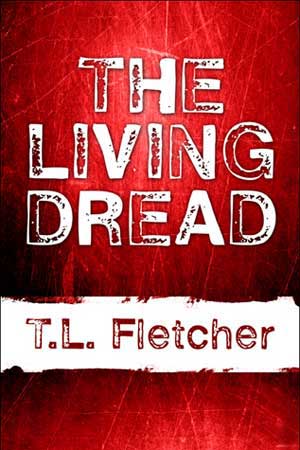 THE LIVING DREAD
THE LIVING DREAD
Author T. L. Fletcher
Published by: Self published
Publication Date: 2010
Format: Black /White
Price: $NA
Remember the scary stories you used to tell when you were a kid? Around the campfire, at slumber parties, when you stayed up much too late and gave yourself the shivers? T.L. Fletcher’s The Living Dread is what those stories wanted to be when they grew up.
This collection of short stories explores all the familiar themes of sleepover terror: mysterious sounds in the dark; crafty knife-wielding maniacs; teenagers meeting bloody fates. The novelty lies in the elements that no child’s brain could conjure. Fletcher acknowledges no limits in crafting his bogeymen. Every taboo is flouted, every line crossed. The bounds of normalcy are left so far behind that you’ll want to look over your shoulder just to make sure they’re still back there somewhere. That is, if you can work up the courage to look behind you.
The one hiccup I encountered in my otherwise eerie journey through Fletcher’s mysterious mansions and nightmarish neighborhoods was an intermittent linguistic stumble. At times, Fletcher treats us to devilishly clever images and neat turns of phrase. But at others, awkward constructions interrupt the narrative flow. The stories themselves sometimes hide behind a few too many adjectives and adverbs, and the reader will no doubt be eager to wade past these pesky modifiers and get to the meat of the tales—red and raw and delicious as it promises to be.
With both monsters and killers on the loose, not to mention a slew of innocent—and not-so-innocent—victims awaiting their doom, The Living Dread’s gore factor is astronomical. But the creepiest element of Fletcher’s writing is not the blood and guts. Throughout all of the stories, there runs a haunting note of the inexplicability of evil. Terrible things happen in these stories, and we never know why. For some readers, this loose-ends approach may take some getting used to, but it is this very sense of the unexplained that makes the stories frightening. After all, there is only so much splatter our brains can take before they are saturated with all the gore they can handle and become desensitized. But there is no limit to the number of times we can wonder “Why?” And this is the question that haunts the pages of The Living Dread.
Even in the later tales, when the storylines take a serpentine twist and revisit some of our old friends and fiends from earlier in the book, there is not so much resolution as a deeper questioning. Fletcher has not brought us back so that we may finally understand the gruesome events we’ve witnessed. He teases us with a little bit of comprehension so that we are all the more disturbed when our complacency is once more wrenched from us. For above all, these stories are meant to unsettle us. By the end of the book, the reader’s psyche is weary, his mind battered. And he is ready to take a long rest … with the lights on.
 Horror News | HNN Official Site | Horror Movies,Trailers, Reviews
Horror News | HNN Official Site | Horror Movies,Trailers, Reviews